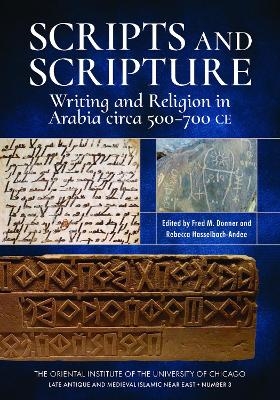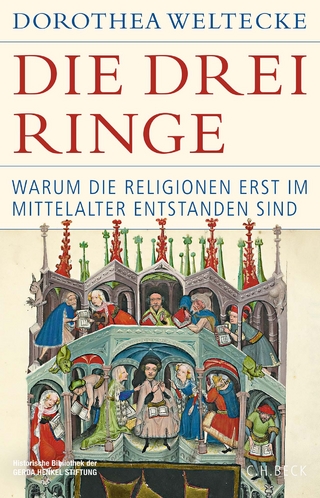
Scripts and Scripture
Writing and Religion in Arabia circa 500-700 CE
Seiten
2022
Institute for the Study of Ancient Cultures (Verlag)
978-1-61491-073-2 (ISBN)
Institute for the Study of Ancient Cultures (Verlag)
978-1-61491-073-2 (ISBN)
How did Islam's sacred scripture, the Arabic Qur'an, emerge from western Arabia at a time when the region was religiously fragmented and lacked a clearly established tradition of writing to render the Arabic language? The studies in this volume address different aspects of this question.
How did Islam's sacred scripture, the Arabic Qur'an, emerge from western Arabia at a time when the region was religiously fragmented and lacked a clearly established tradition of writing to render the Arabic language?
The studies in this volume, the proceedings of a scholarly conference, address different aspects of this question. They include discussions of the religious concepts found in Arabia in the centuries preceding the rise of Islam, which reflect the presence of polytheism and of several varieties of monotheism including Judaism and Christianity. Also discussed at length are the complexities surrounding the way languages of the Arabian Peninsula were written in the centuries before and after the rise of Islam-including Nabataean and various North Arabian dialects of Semitic-and the gradual emergence of the now-familiar Arabic script from the Nabataean script originally intended to render a dialect of Aramaic.
The religious implications of inscriptions from the pre-Islamic and early Islamic centuries receive careful scrutiny. The early coalescence of the Qur'an, the kind of information it contains on Christianity and other religions that formed part of the environment in which it first appeared, the development of several key Qur'anic concepts, and the changing meaning of certain terms used in the Qur'an also form part of this rich volume.
How did Islam's sacred scripture, the Arabic Qur'an, emerge from western Arabia at a time when the region was religiously fragmented and lacked a clearly established tradition of writing to render the Arabic language?
The studies in this volume, the proceedings of a scholarly conference, address different aspects of this question. They include discussions of the religious concepts found in Arabia in the centuries preceding the rise of Islam, which reflect the presence of polytheism and of several varieties of monotheism including Judaism and Christianity. Also discussed at length are the complexities surrounding the way languages of the Arabian Peninsula were written in the centuries before and after the rise of Islam-including Nabataean and various North Arabian dialects of Semitic-and the gradual emergence of the now-familiar Arabic script from the Nabataean script originally intended to render a dialect of Aramaic.
The religious implications of inscriptions from the pre-Islamic and early Islamic centuries receive careful scrutiny. The early coalescence of the Qur'an, the kind of information it contains on Christianity and other religions that formed part of the environment in which it first appeared, the development of several key Qur'anic concepts, and the changing meaning of certain terms used in the Qur'an also form part of this rich volume.
| Erscheinungsdatum | 25.07.2022 |
|---|---|
| Reihe/Serie | Late Antique and Medieval Islamic Near East |
| Zusatzinfo | 55 figs, 10 tbls & 2 maps |
| Sprache | englisch |
| Maße | 190 x 253 mm |
| Gewicht | 749 g |
| Themenwelt | Geschichte ► Teilgebiete der Geschichte ► Religionsgeschichte |
| Geisteswissenschaften ► Religion / Theologie ► Islam | |
| ISBN-10 | 1-61491-073-1 / 1614910731 |
| ISBN-13 | 978-1-61491-073-2 / 9781614910732 |
| Zustand | Neuware |
| Haben Sie eine Frage zum Produkt? |
Mehr entdecken
aus dem Bereich
aus dem Bereich
Herkunft, Blüte, Weg nach Osten
Buch | Hardcover (2024)
C.H.Beck (Verlag)
CHF 55,90
Von den Anfängen bis zur Gegenwart
Buch | Hardcover (2022)
C.H.Beck (Verlag)
CHF 47,60
warum die Religionen erst im Mittelalter entstanden sind
Buch | Hardcover (2024)
C.H.Beck (Verlag)
CHF 53,20


